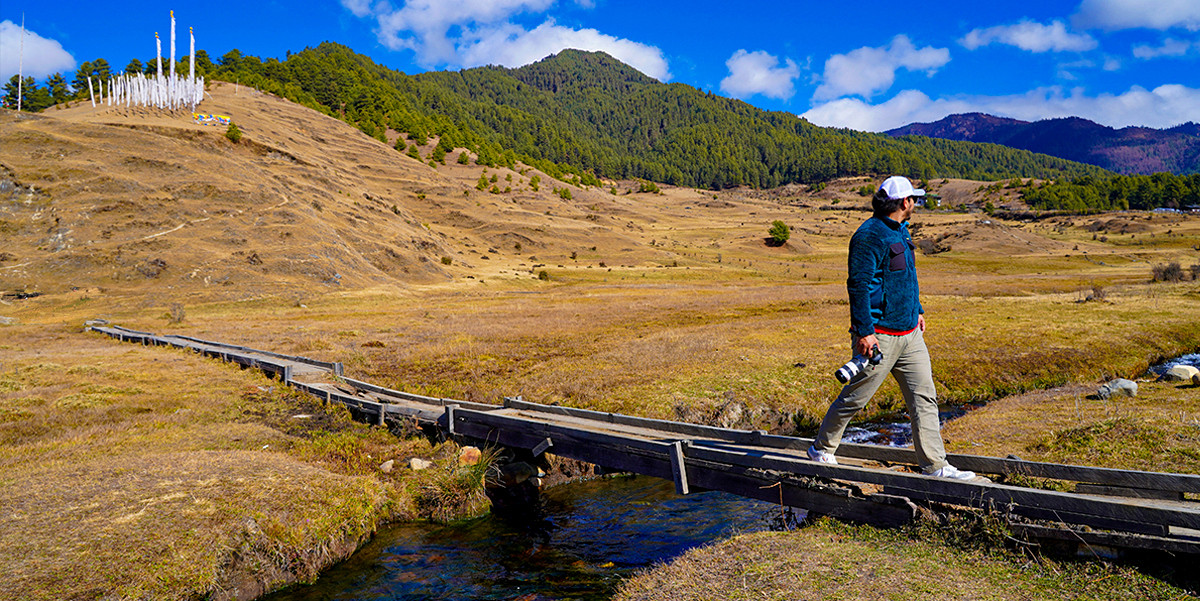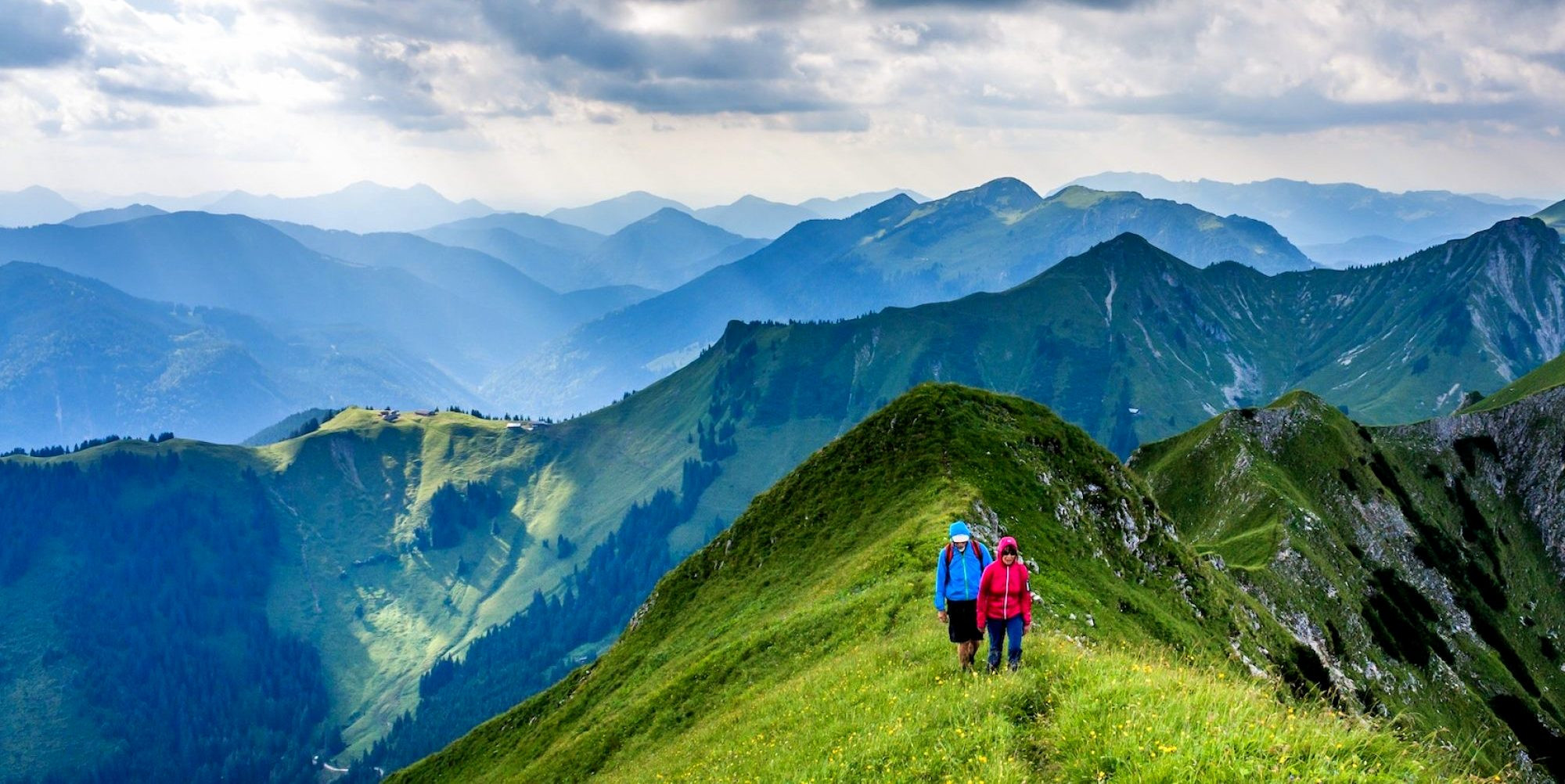Spring Season (March to May)
The Spring Season (March to May) in Bhutan is one of the most favored times for trekking enthusiasts to explore the stunning natural landscapes of this Himalayan kingdom. Here are the key reasons why spring is such an ideal time for trekking in Bhutan:
.jpg)
-
Floral Splendor: Spring marks the blooming period for a variety of flowers, including the iconic rhododendrons, magnolias, and wildflowers, which carpet the mountain slopes and valleys in vibrant colors. This natural spectacle provides a breathtaking backdrop for treks.
-
Pleasant Weather: The weather during spring is comfortably warm with moderate temperatures, which makes it ideal for trekking. The skies are clearer after the winter, providing excellent visibility for stunning views of the Himalayan peaks.
-
Festival Season: Spring aligns with several of Bhutan's colorful and vibrant festivals, such as Paro Tshechu and Punakha Tshechu. These festivals are significant cultural events featuring traditional dance performances, music, and spiritual ceremonies. Trekking during these months offers a unique opportunity to experience Bhutanese culture firsthand.
-
Optimal Trekking Conditions: The trails are generally dry and stable, making them safer and more accessible for trekkers. The clear weather also allows for uninterrupted views of the mountains, making every hike more rewarding.
-
Wildlife Sightings: Spring is a great time for wildlife enthusiasts as many species are more visible during these months. The natural forests and high-altitude meadows teem with life, adding an exciting element to the trekking experience.
Overall, trekking in Bhutan during the spring season offers a harmonious blend of natural beauty, comfortable climate, and cultural richness, making it a highly recommended time for an unforgettable trekking adventure.
Autumn Season (September to November)
The Autumn Season (September to November) in Bhutan is highly celebrated as an ideal time for trekking, due to several compelling reasons that attract trekkers from around the world:

-
Stable and Clear Weather: Autumn is renowned for its stable weather conditions and minimal rainfall. The skies are generally clear, offering exceptional visibility. This clarity allows trekkers to enjoy spectacular panoramic views of the towering Himalayan peaks, including the famous Mount Jomolhari.
-
Optimal Trekking Conditions: With dry trails and cool temperatures, autumn provides comfortable trekking conditions. The moderate climate makes long treks more manageable and enjoyable, allowing trekkers to explore high-altitude routes and remote passes with less difficulty.
-
Scenic Beauty: As the season progresses, the landscape transforms into a vibrant tapestry of colors. The forests take on a golden hue, and the air is crisp and fresh, enhancing the scenic beauty of the trekking routes. This picturesque setting is perfect for photography and immersing oneself in nature.
-
Cultural Festivals: Autumn coincides with some of Bhutan’s most important cultural festivals, such as the Thimphu Tshechu and the Paro Tshechu. These festivals draw crowds from across Bhutan, showcasing elaborate masked dances, traditional music, and religious dramas in the courtyards of the kingdom’s ancient dzongs (fortresses). Participating in these festivals offers a profound glimpse into the spiritual and communal life of the Bhutanese people.
-
Wildlife Sightings: The cooler temperatures of autumn are conducive to wildlife activity, particularly in the early mornings and late afternoons. Trekkers might encounter a variety of birds migrating through the region, as well as other wildlife that are more active during these cooler months.
Trekking in Bhutan during autumn not only promises excellent trekking conditions but also an enriching experience of Bhutanese culture and natural splendor. It’s a season that combines the best of adventure, scenic beauty, and cultural richness, making it a perfect time for an unforgettable trek.
Avoid Monsoon Season (June to August)
The Monsoon Season (June to August) in Bhutan is generally considered a less ideal time for trekking due to several challenges posed by the weather conditions:
.jpg)
-
Heavy Rainfall: During the monsoon, Bhutan experiences substantial rainfall, particularly in the southern regions. This can lead to slippery trails and muddy conditions that make trekking difficult and potentially hazardous.
-
Limited Visibility: Frequent rain and mist during the monsoon obscure the majestic views of the mountains. The cloud cover often prevents trekkers from enjoying the spectacular landscapes that Bhutan is famous for.
-
Increased Risk of Landslides: The heavy rains can destabilize the terrain, increasing the risk of landslides and road blockages. This not only makes certain trek routes risky but can also cause significant disruptions to travel plans.
-
Presence of Leeches: The wet conditions of the monsoon bring out leeches along the trekking paths, particularly in the lower altitudes and densely forested areas. These can be a nuisance for trekkers, although they are generally harmless.
-
Humidity and Discomfort: The rain brings high humidity, which can be uncomfortable and may contribute to more strenuous trekking conditions. The damp and wet environment can also lead to difficulties in drying clothing and gear.
While the monsoon season is less favorable for trekking, it offers a unique experience for those who are prepared to face its challenges. The landscapes are lush and the rivers and waterfalls are at their most vibrant. Additionally, there are fewer tourists during this time, which can be appealing for those seeking solitude and a more personal encounter with nature. If trekking in Bhutan during the monsoon, it’s essential to be well-prepared with appropriate rain gear, waterproof bags for equipment, and a flexible itinerary that allows for weather delays.
Winter Season (December to February)
The Winter Season (December to February) in Bhutan presents a distinct trekking experience characterized by serene landscapes and the stark beauty of snow-covered mountains. While the colder temperatures and potential snow might pose some challenges, winter trekking in Bhutan has its own set of advantages:
.jpg)
-
Crisp and Clear Days: Winter days in Bhutan are often crisp and clear, providing excellent visibility. This clarity is ideal for photographers and nature enthusiasts who wish to capture the serene beauty of the Himalayas draped in snow.
-
Less Crowded Trails: With fewer tourists visiting during the winter months, the trekking trails are less crowded. This provides a more tranquil and intimate experience of Bhutan’s natural and cultural heritage.
-
Accessible Lower Altitude Treks: While higher altitude treks may be inaccessible due to snow, lower altitude treks remain open and are quite pleasant. Trails like the Druk Path Trek and the Dagala Thousand Lakes Trek are more manageable and offer stunning views and the tranquility of a winter landscape.
-
Seasonal Festivals: Although fewer than in spring and autumn, some cultural festivals occur in the winter, such as the Trongsa Tshechu and the Lhuntse Tshechu. These festivals offer insights into the spiritual and communal life of the Bhutanese during the colder months.
-
Unique Wildlife Sightings: Winter is a good time for bird watchers, as migratory birds visit the region. Additionally, the lower foliage density during winter can make it easier to spot wildlife that might be more elusive in other seasons.
-
Challenges of Winter Trekking: The main challenges of trekking in Bhutan during winter include cold temperatures and the potential for snow, which can make some high-altitude passes impassable. Proper gear, including thermal clothing, good insulation, and possibly snow equipment, is essential for comfort and safety.
Trekking in Bhutan during the winter offers the chance to see a quieter, more serene side of the country, making it appealing for those looking for solitude and a different perspective on the Himalayan landscape. Being prepared for the colder conditions will ensure that trekkers can enjoy all that winter in Bhutan has to offer.
The best time to trek in Bhutan largely depends on personal preferences and what you aim to experience. Spring (March to May) and Autumn (September to November) are ideal for their clear skies, comfortable weather, and vibrant cultural festivals, offering optimal conditions for trekking. Conversely, the Monsoon Season (June to August) presents challenges with its heavy rainfall, while Winter (December to February) offers quiet, snowy landscapes for those prepared for colder temperatures. Each season in Bhutan offers unique experiences, ensuring that every trekker can find a time that suits their trekking goals and interests.
FAQs for Best Time for Trekking in Bhutan
Q: What is the absolute best time to trek in Bhutan?
A: The best times are during the Spring (March to May) and Autumn (September to November) seasons when the weather is stable, skies are clear, and the landscapes are vibrant.
Q: Can I trek in Bhutan during the monsoon season?
A: Yes, but trekking during the monsoon (June to August) can be challenging due to heavy rains, slippery trails, and increased leech activity. Some sheltered regions like Bumthang may offer better conditions.
Q: Is it possible to trek in Bhutan in winter?
A: Yes, lower altitude treks are quite accessible and enjoyable in winter (December to February), despite the cold. High-altitude treks may be impractical due to snow-covered paths.
Q: Are there any festivals that coincide with good trekking conditions?
A: Yes, many of Bhutan's colorful festivals, such as Paro Tshechu in spring and Thimphu Tshechu in autumn, coincide with great trekking conditions and offer a wonderful cultural experience alongside trekking.
Q: What should I wear for trekking in Bhutan during spring or autumn?
A: It is advisable to dress in layers, with moisture-wicking inner layers and waterproof and windproof outer layers. Also, bring strong, comfortable trekking boots.
Q: How busy are the trekking routes in Bhutan during the optimal seasons?
A: The routes can be moderately busy during Spring and Autumn as these are the peak seasons for trekking. However, Bhutan’s strict tourism policies prevent overcrowding.
Q: What wildlife can I see while trekking in Bhutan?
A: Depending on the season and the trek, you might see various species of birds, including the rare black-necked crane, Himalayan blue sheep, and even the elusive snow leopard in higher altitudes.
Q: Do I need a guide to trek in Bhutan?
A: Yes, Bhutanese law requires all tourists to have a licensed Bhutanese guide accompanying them during their treks to ensure safety and enhance the cultural experience.
Q: How do I prepare for altitude changes during treks in Bhutan?
A: Acclimate properly to avoid altitude sickness, stay hydrated, eat well, and ascend gradually throughout your trek.
Q: Are there any specific health considerations for trekking in Bhutan?
A: It’s essential to be in good physical condition, consider getting vaccinations recommended for travel, and prepare for the altitude, especially if trekking to higher elevations.
For the Nepal tour, please click here.
If you are looking for different kinds of Nepal Tours or Trekking Packages, feel free to contact us.


.jpg)

.jpg)
.jpg)
